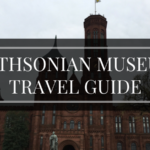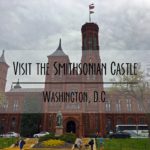I have always been fascinated with space. As a young boy my dad would help me build paper models of spacecraft we found on the internet (a new thing in those days). And even though I never realized my childhood dream of becoming an astronaut, I still look forward to the day of commercial flights to the moon. Even so, we almost didn’t make it to the National Air and Space Museum this time around.
Meagan is not as fascinated with the subject as I am (not at all actually) and time spent at the American History Museum and Newseum threatened to take away our chance to go to the Air and Space Museum. We had actually put it in the “maybe” itinerary, but we ended up going and we are both very glad that we did.
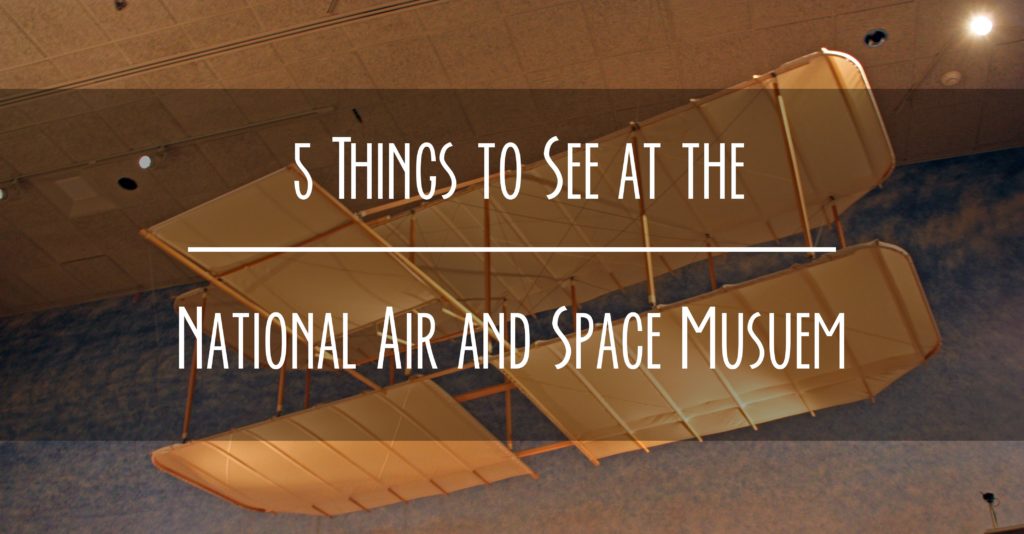
How to Get to the National Air and Space Museum:
Note: There are two National Air and Space Museums. One is on the Mall in Washington, D.C. the other is outside of the city a ways. This post is about the one on the Mall.
We lucked out in being able to go to the National Air and Space Museum at all. As you may know everything government run in Washington D.C. closes up shop at 5 or 5:30 P.M. During part of the week we were there however the Cherry Blossom Festival was happening. Because of the festival, the Smithsonians stayed open an extra two hours to accommodate more visitors. Make sure you check the hours and plan accordingly.
The National Air and Space Museum is located on the south side of the Mall next to the Hirshhorn Museum. The closest Metro stop is L’Enfant Plaza (Orange, Blue, Silver, Yellow, and Green lines). If you exit the metro on Maryland Ave side you only need to walk a block north to be at the Air and Space Museum.
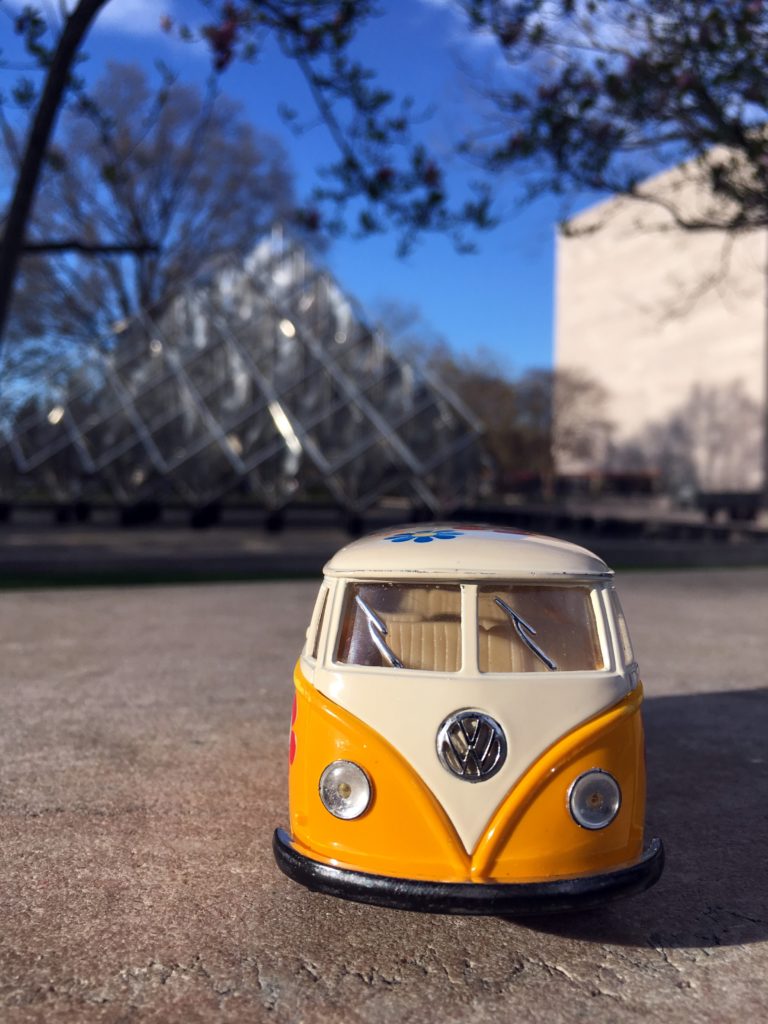
If you are already on the National Mall it is very easy to just walk from the monuments or other museums to the National Air and Space Museum. We recommend entering from Independence Avenue regardless of how you arrive since street side entrances always tend to have smaller lines then Mall side entrances.
The Air and Space Museum is extremely popular however so prepare yourself to stand in lines and deal with crowds. Before you go to the Museum download the Go Flight app. You can look at this to prep while you are standing in line. Entrance to the museum is free but you will go through an airport style bag screening. Entrance to the IMAX films and Planetarium both require purchased tickets.
5 Things to See at the National Air and Space Museum:
If you have limited time and can only see some of the most interesting things in the Air and Space Museum the be sure to check out these five.
1: The Wright Brothers 1903 Flyer
Honestly if this were the only thing in the museum it would be worth going to see. The museum probably wouldn’t exist at all, or would be full of only hot air balloons, if this flyer hadn’t proved that heavier than air flight was possible.
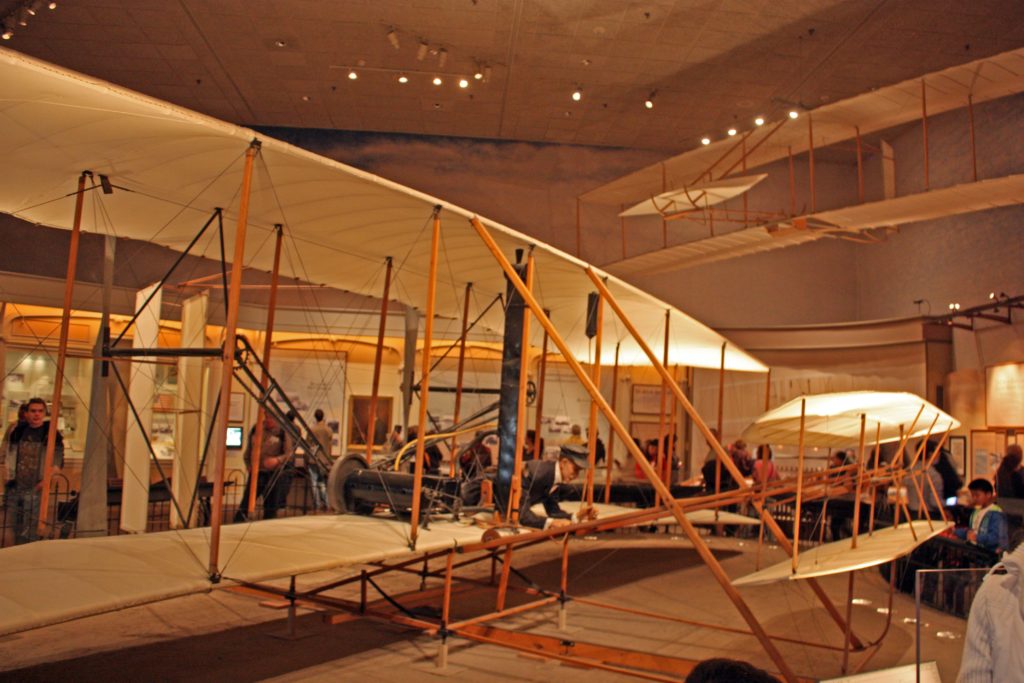
The flyer is surrounded by an exhibit dedicated to the Wright Bothers. It tells about their life and how they discovered the principles of flight. I highly recommend reading The Wright Brothers by David MuCullough before you visit to get a stronger appreciation for this flyer and the exhibit. It will also help you know about the important role that the Smithsonian Institute played in the development of powered flight.
2: Apollo Lunar Module and Moon Rock
This Lunar Module did not stand on the moon, but it was used in testing and is exactly like the one that did eventually land there. The Moon Rock nearby did in fact come from the moon, allowing you to touch something that is not native to this earth. That blows my mind a little bit.
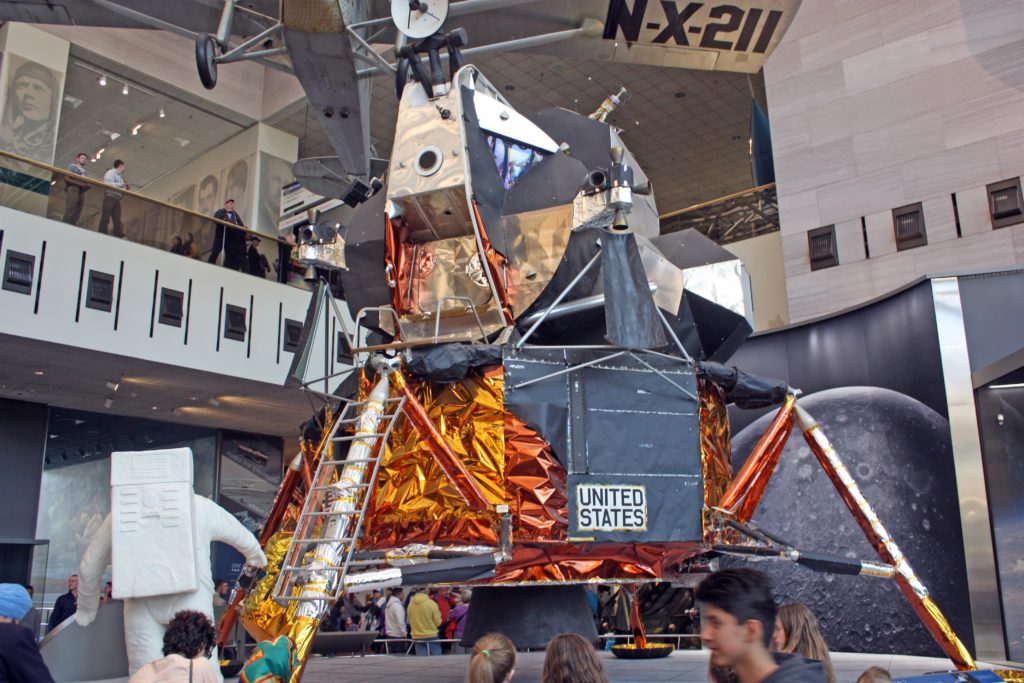
The exhibit leading from the Mall side entrance to the Lunar Module details many important milestones in space exploration including a Sputnik replica.
3: Charles Lindberg’s Spirit of St. Louis
Hanging in the air above the Lunar Module is the Spirit of St. Louis. You can also view it from the second floor. This is the first plane to carry a solo pilot across the Atlantic from New York to Paris. Which is pretty amazing when you think about it. It flew all the way across the ocean, and returned to eventually live here in the Smithsonian National Air and Space Museum.
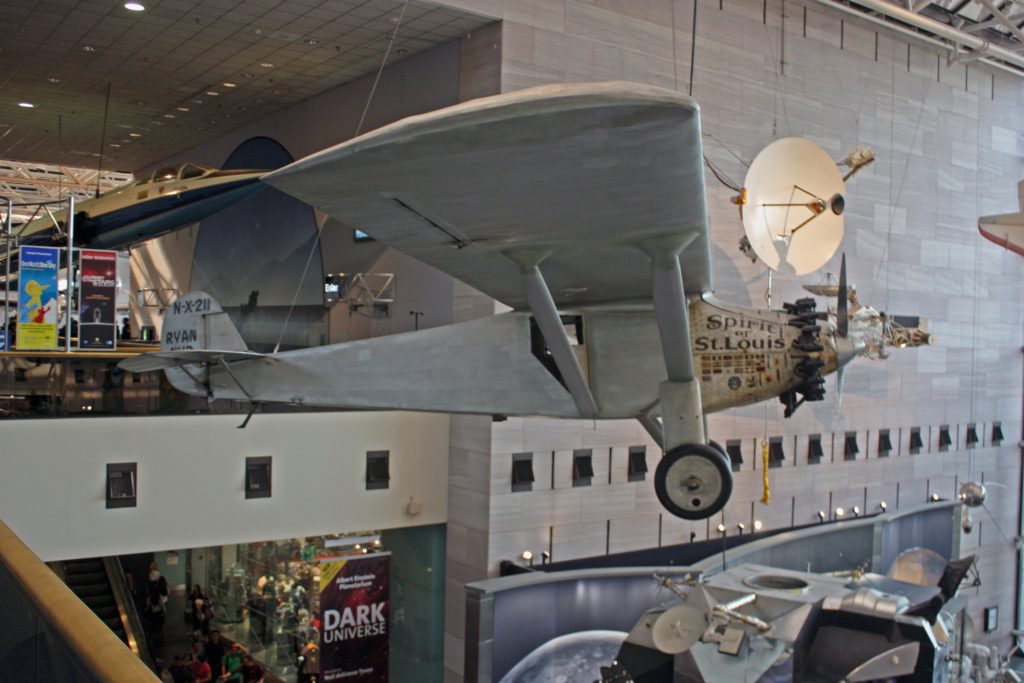
When I saw this plane, it was cool, my wife was more interested in it than I was to be honest. But after I got back I watched the movie The Spirit of St. Louis. That really changed my perspective on the whole thing, and now I want to go back and see it again. So I suggest watching the movie before you go to the museum. The plane was extremely innovative and Charles Lindberg succeeded when other aviators were failing at the same challenge.
4: Explorer II Gondola
Located on the second level just across from the Spirit of St. Louis in the Pioneers of Flight exhibit is a strange, round creation: the Explorer II Gondola. It is actually the cabin of the first hot air balloon to capture photographs of the distinct layers of the atmosphere. I haven’t read a book or seen a movie on this aircraft, but I kind of want to. It sounds pretty exciting (the first Explorer I blew up while its crew parachuted to safety).
The entire Pioneers of Flight exhibit is worth visiting as it contains many amazing aircraft and stories. Including Amelia Earhart’s plane shown below.
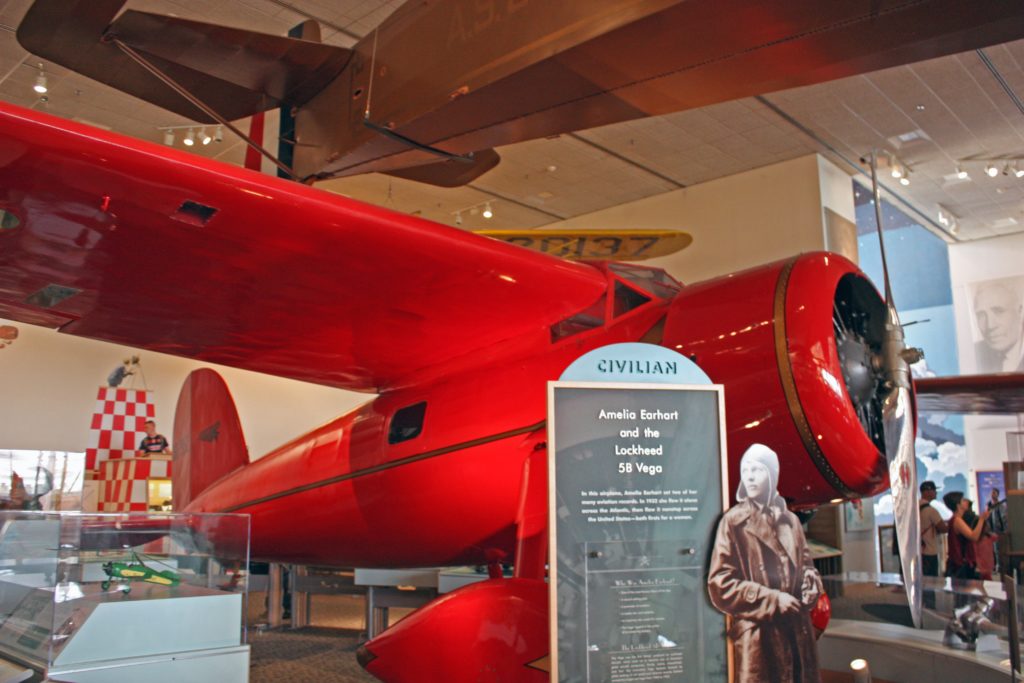
5: Douglas DC-7
Found in the America by Air exhibit the Douglas DC-7 is just the nose and part of the cabin of an American Airlines plane from the 1950s. This is a fun artifact because you can actually climb the stairs to enter the plane and walk through the cockpit and the cabin where passengers would have ridden.
The set up and style of the airplane are much different than what we ride in today and it is fascinating to see the way people use to fly. In some ways it feels that flying has gotten worse. Certainly you will see that security has gotten much tighter.
On the way into the Douglas DC-7 you will see a poster detailing the flight attendant industry which is interesting and a little appalling. When you emerge from the plane it will be into the portion of the exhibit that detail commercial flight in America from the early days through the changes that 9/11 brought.
Sum Up
The National Air and Space Museum in Washington D.C. is vast and could be a multiple day excursion in itself. Man has always been fascinated with flying so I think there is something here that will appeal to almost anyone.
We barely scratched the surface of this museum in this post. The map you can pick up at the info desk has a highlights tour that includes some of the things we talked about here and some that are different. The Go Flight app also contains several self guided tours you can do depending on your interest.
This is an excellent museum about two fascinating topics. It is great for all ages, and completely free. If you need to eat while visiting there is a food court on the far east end.


